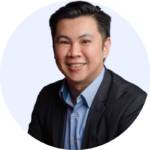Reducing customer effort is often more operationally efficient at driving customer loyalty than customer delight tactics.
In a world where digital transformation has become a priority for many companies, a new need has emerged on the horizon – digital optimisation. This concept signifies the optimisation of different technologies, interactions, processes, and operations that profoundly impact customer experiences. Amidst the operational complexity and market diversity, achieving digital optimisation presents a host of challenges and opportunities for enterprises.
In an enlightening discussion with UC Today, Thomas Laboulle, CEO and Founder of Toku recently dove deep into the current enterprise market dynamics and the pressing need for an end-to-end digital optimisation approach.
In the upcoming sections, we explore his perspective of:
- the shift from digital transformation towards digital optimisation,
- the importance of an end-to-end approach,
- how enterprises can blend their existing technology with new investments, and
- the support Toku offers to companies during their optimisation efforts.
Buckle up as we navigate the intricacies of digital optimisation today.
From digital transformation to digital optimisation
Over the past few years, digital transformation has been the key focus for many companies. This process often involved a fundamental shift from traditional on-premise infrastructures to cloud-based systems, reshaping the way businesses operate and interact with their customers.
But as with any major transformation, the journey has not been without its challenges.
For some, the COVID-19 pandemic served as a catalyst, compelling businesses to accelerate their digital transformation journeys. Sometimes, this led to “quick and dirty” implementations, where the immediate need to digitise outweighed strategic planning and careful execution.
Now, as the dust settles and businesses have more time and data at their disposal, they are evaluating their choices.
We see more enterprises reinforcing successful implementations, pivoting where necessary, and sunsetting ineffective systems.
For instance, a company might have hastily implemented a particular Customer Relationship Management (CRM) system during the pandemic. However, after several months of operation, they may find that the system isn’t integrating well with the contact centre platform.
In this case, the company could opt to merge their contact centre software and CRM using a Computer Telephony Integration (CTI) that gives agents all the data they need to provide better customer experiences in one place.
The need for an end-to-end approach
In the journey towards digital optimisation, it becomes increasingly clear that a fragmented approach often falls short of delivering optimal results.
We advocate for an end-to-end approach, especially for large organisations and multinational enterprises struggling with operational complexity, diverse markets, and various regulations.
An end-to-end approach ensures consistency and seamless integration across the board.
It’s about having the same vendor and project team working hand in hand from the initial design phase through to deployment and ongoing maintenance. The benefits of this approach are manifold. For one, it streamlines processes, enhancing overall efficiency within the organisation. More importantly, it fosters a high level of accountability, as the same provider accompanies the enterprise throughout its entire digital journey.
Imagine an enterprise implementing a new cloud infrastructure across multiple markets.
With differing regulations, potential legacy system integrations, and complex operational intricacies, having a single provider oversee the whole process helps ensure that nothing falls through the cracks.
Harmonising existing tech with new investments
As enterprises navigate the path towards digital optimisation, a critical task arises – tying existing technology to new investments.
To approach this, we recommend conducting a comprehensive audit.
This involves a thorough evaluation of the current state of technology, gathering data, and pinpointing pain points and areas for improvement.
The focus should be on initiatives that have a direct impact on customer satisfaction and revenue generation. Rushing changes should not be the way forward.
To illustrate, consider an enterprise that uses an older CRM system and plans to invest in advanced data analytics. A hasty implementation of the new technology might disrupt existing operations and fail to deliver the desired benefits.
On the other hand, a careful, strategic integration approach that considers the existing CRM system’s capabilities, along with data handling and processing requirements, can deliver more meaningful insights, enhance customer service and ultimately drive business growth.
Moreover, it is critical to work with a trusted provider who can offer expertise and guidance throughout the process. The right provider will not only offer technological solutions but will also help navigate through the intricacies of this optimisation process, ensuring the best outcomes for the enterprise.
How Toku can support enterprise digital optimisation
As companies embark on their digital optimisation journey, having the right support can make all the difference.
One of our key strengths lies in our extensive presence in the Asia Pacific region.
With a deep understanding of the region’s complex, rapidly changing regulatory environment, we assist clients in navigating through diverse regulations. This helps assure enterprises that they are compliant with various market requirements while optimising their digital strategies.
Embrace digital optimisation as the new normal
As we look towards the future, one thing is clear: digital optimisation is not just about making incremental improvements to the existing technology stack.
It’s about reimagining business operations, focusing on customer experiences, and ensuring businesses are fully equipped to thrive in the digital era.
The path ahead may be challenging, but with the right approach and the right partners, the journey to digital optimisation promises to be a rewarding one.
 Ana Castrillon
Ana Castrillon 



 Benson Chan
Benson Chan 
 Girish Dharmaraj
Girish Dharmaraj